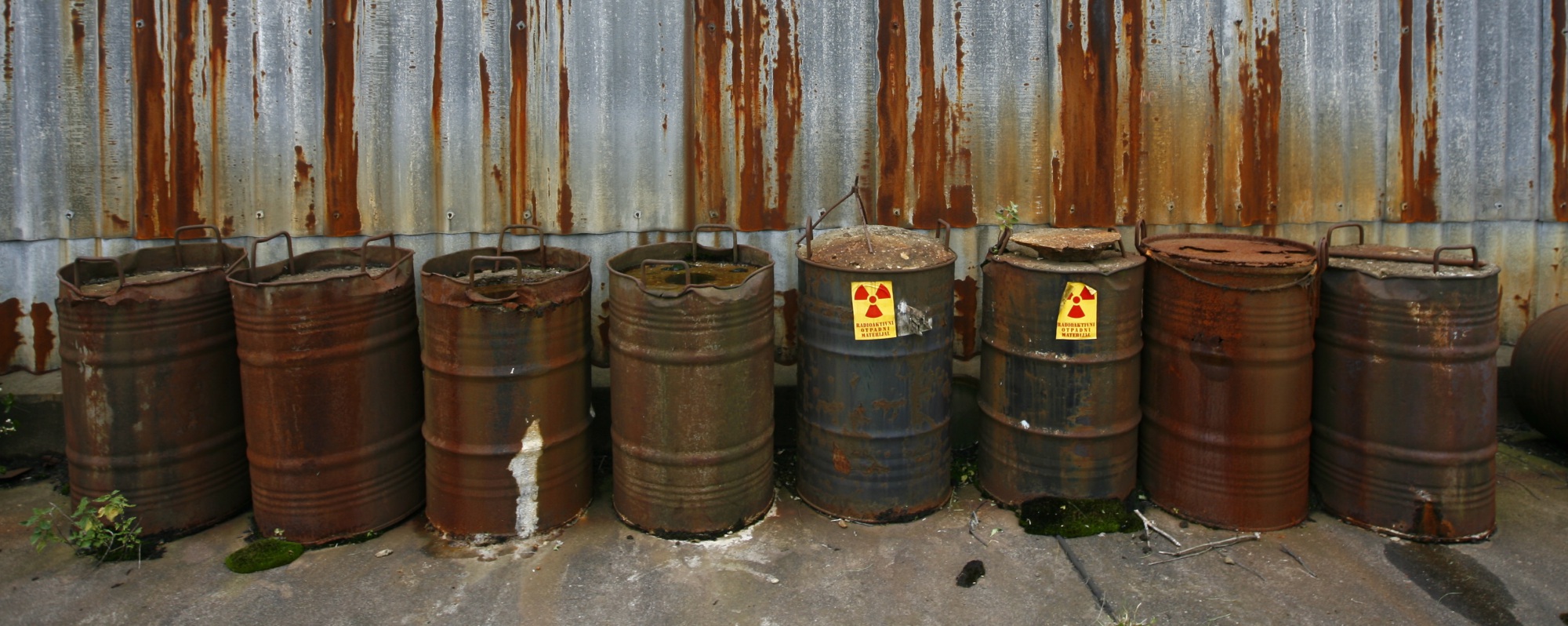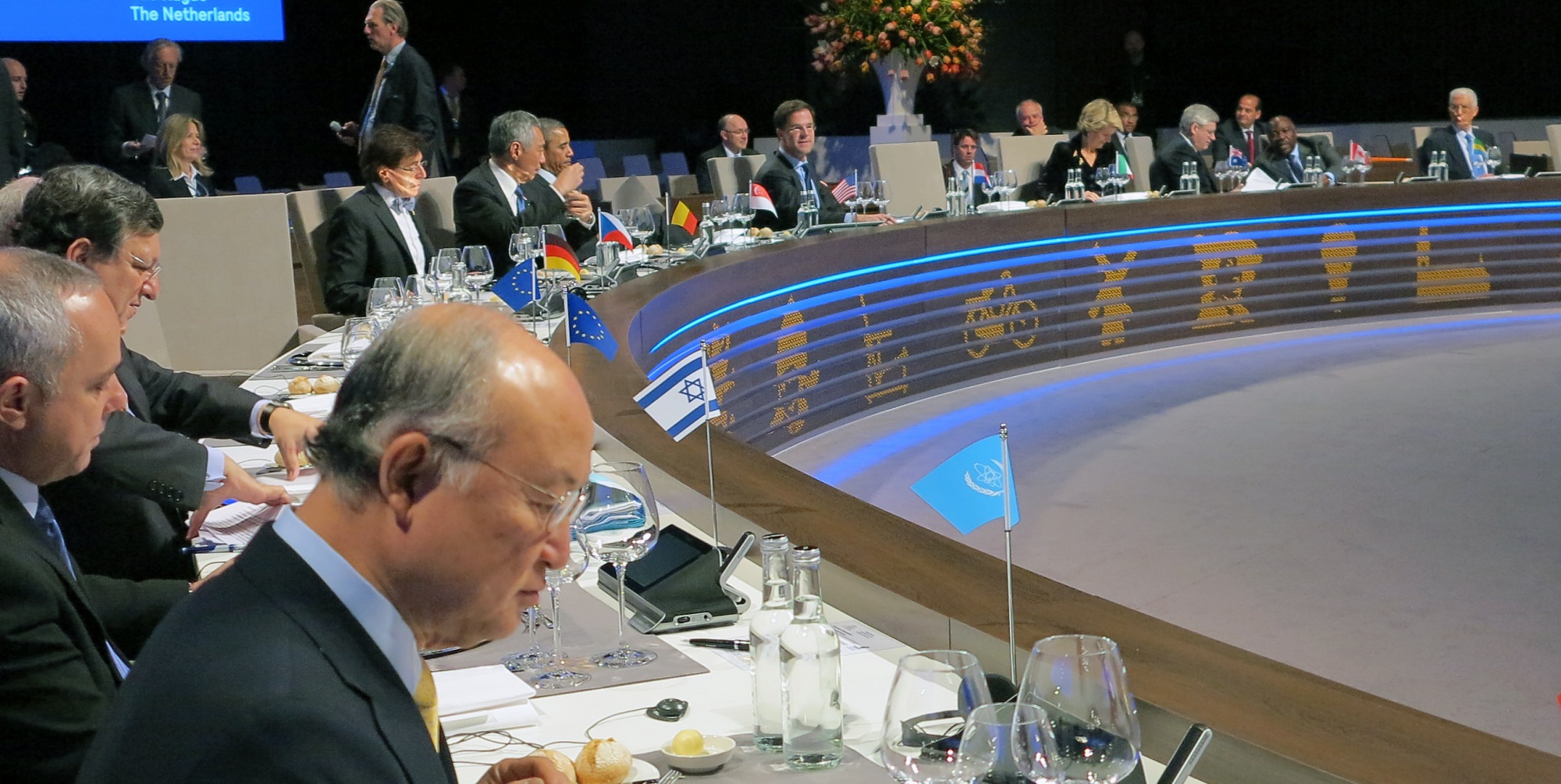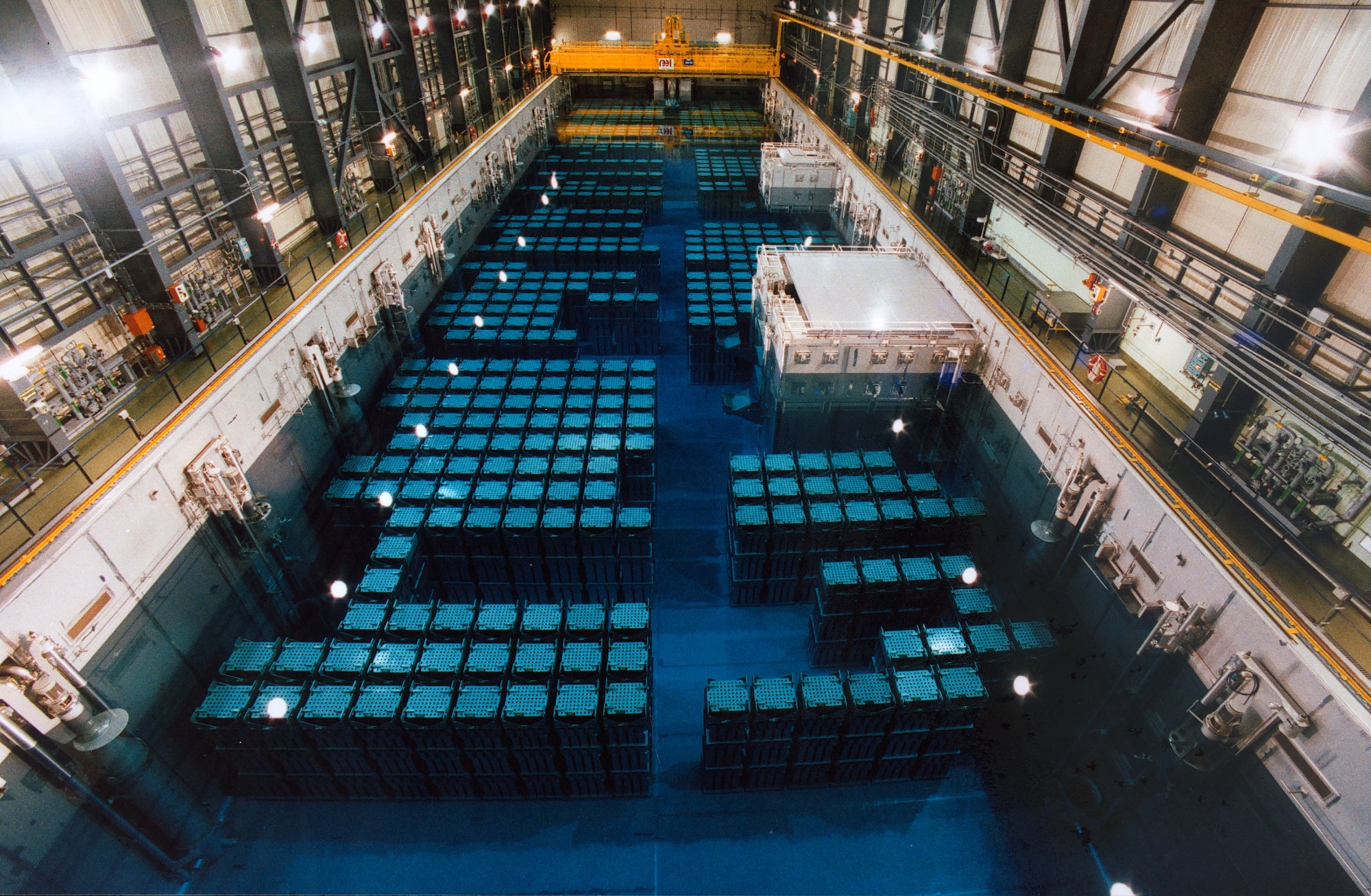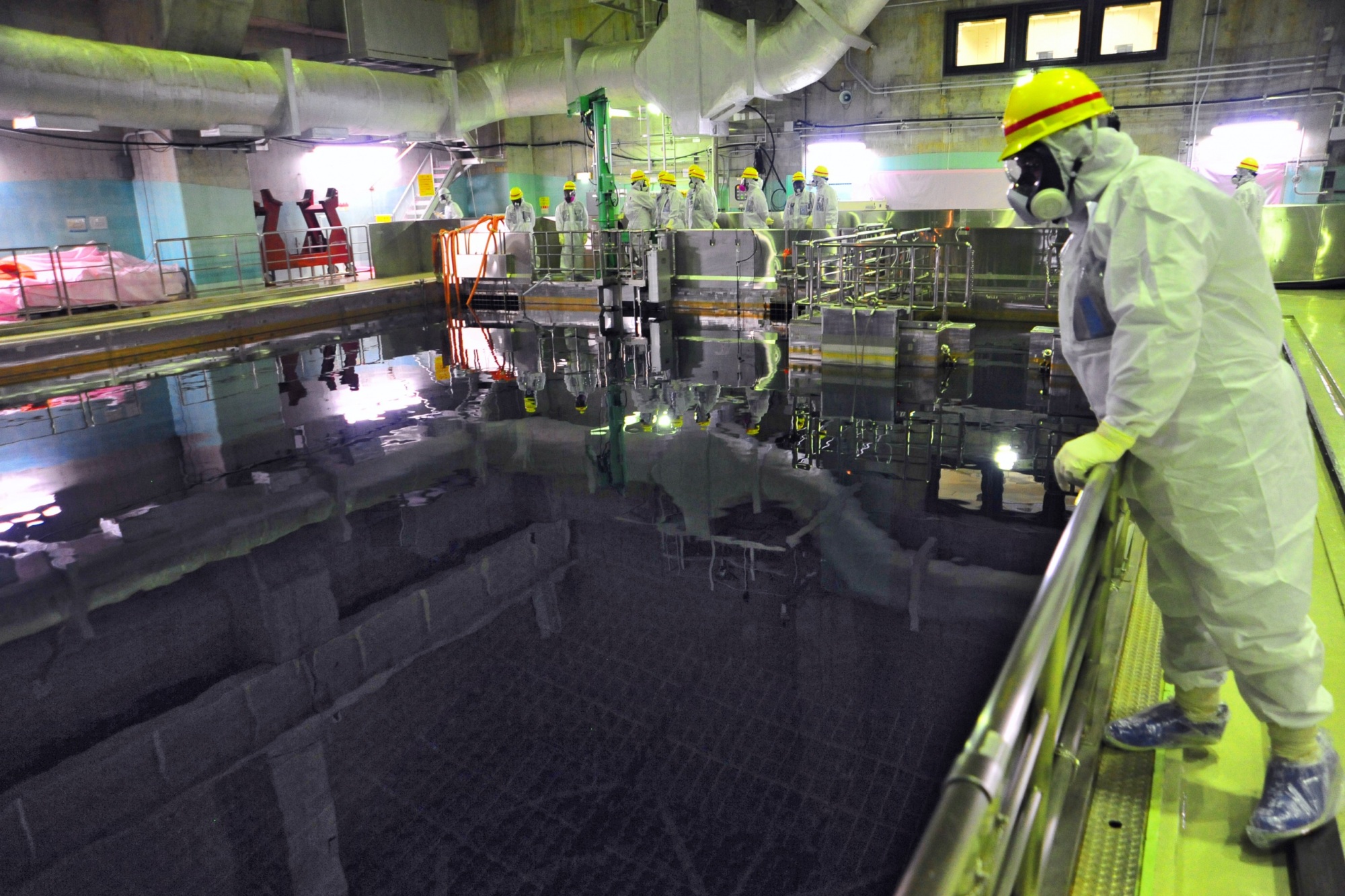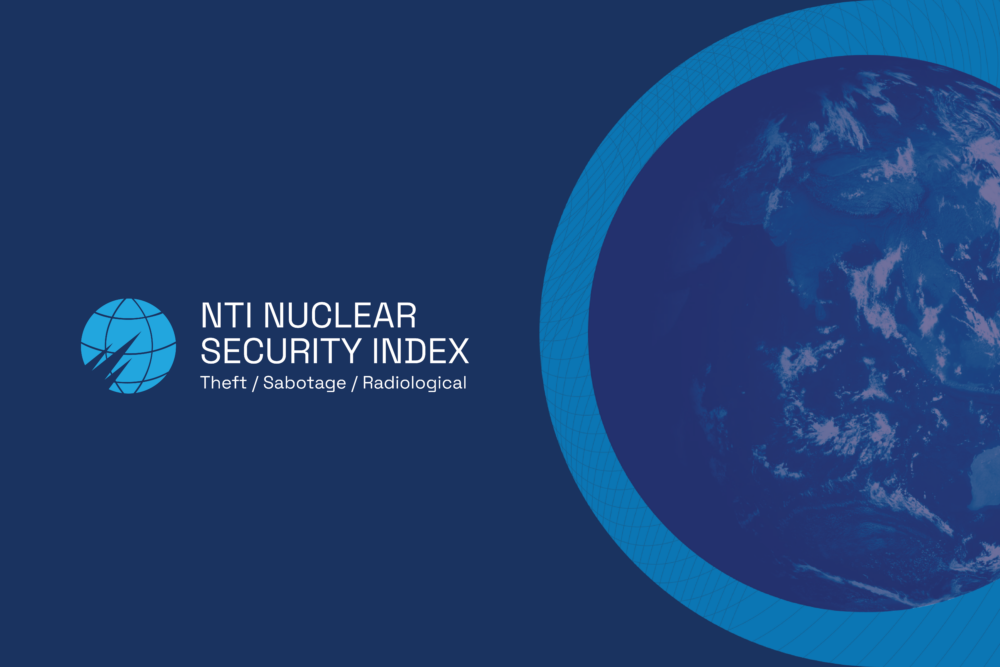Foreword
Over the last 6 years, the Nuclear Security Summits have brought the attention of world leaders to the nuclear terrorist threat. Started by President Barack Obama in 2010, these biennial summits have made significant progress in securing nuclear materials and enhancing global collaboration on nuclear security challenges. However, despite progress, the threat of nuclear terrorism continues to evolve, and troubling gaps remain in the global system for nuclear security.
With the Summit process now ended, the Nuclear Threat Initiative has prepared a progress report looking at actions taken at the final Summit toward building a comprehensive and effective global nuclear security system and where gaps remain. See our report below, or download the report as a PDF.
Introduction
Over the last four years and in parallel with the global Nuclear Security Summits, NTI worked with senior government officials from 29 countries, representatives from the International Atomic Energy Agency (IAEA) and the World Institute for Nuclear Security, leading experts, and nuclear industry representatives in a Global Dialogue on Nuclear Security Priorities to explore critical questions: What are the most important steps for effective nuclear security? Where are the gaps? What should be prioritized? The group agreed that the current patchwork of initiatives, voluntary mechanisms, and institutions is inadequate to the task of confronting the threat of nuclear terrorism and that instead there needed to be a comprehensive, effective global system for securing dangerous weapons-usable nuclear materials. The Global Dialogue participants reached consensus on the following four elements of an effective global nuclear security system:
- Comprehensive: All weapons-usable nuclear materials and facilities should be covered by the system, including materials outside civilian programs (“military materials”).
- Standards and Best Practices: All states and facilities holding those materials should adhere to international standards and best practices.
- Confidence Building: States should help build confidence in the effectiveness of their security practices and should take reassuring actions to demonstrate that all nuclear materials and facilities are secure.
- Minimize and Eliminate: States should work to reduce risk through minimizing or, where feasible, eliminating weapons-usable nuclear materials stocks and the number of locations where they are found.
The Global Dialogue also developed recommendations for sustaining high-level political attention and momentum on nuclear security after the Nuclear Security Summit process ends.
The 2016 Summit resulted in significant achievements but considerable gaps in the global system remain. Below are highlights of how the 2016 summit brought us closer to a strengthened global system and where there are remaining gaps.
class="quote">
As long as nuclear materials and facilities exist and the nuclear terrorism threat persists, the cooperative work necessary to prevent catastrophic nuclear terrorism must continue and must remain the highest priority of governments.
Joan Rohlfing, President, Nuclear Threat Initiative
Comprehensive
As a part of a broader global nuclear security system, all weapons-usable nuclear materials and facilities should be covered by the system, including materials outside civilian programs (“military materials”).
Achievements
- As in 2014, the summit communiqué referenced the 83% of global stocks of weapons-usable nuclear materials that are “military materials” and outside international mechanisms, saying “We reaffirm the fundamental responsibility of States, in accordance with their respective obligations, to maintain at all times effective security of all nuclear and other radioactive material, including nuclear materials used in nuclear weapons, and nuclear facilities under their control.”
- The United States and the United Kingdom in a fact sheet and national statement, respectively, described measures they are taking to strengthen the security of their military nuclear materials. By doing so, both countries build international confidence in the effectiveness of their security.
- Pakistan’s national statement noted that it has secured nuclear materials and “all related facilities” in “all places,” which can be interpreted as including military nuclear materials.
Remaining Gaps
- Neither the communiqué nor the Action Plans took additional steps to address the security of the 83% beyond the communiqué’s short statement. United Nations Security Council Resolution 1540 (UNSCR 1540) requires the protection of materials in nuclear weapons and the United Nations Action Plan could have been an appropriate place to note the importance of securing military materials and for countries with those materials to commit to sharing information about those materials in their UNSCR 1540 reports.
- NTI recommended that countries with military nuclear materials sign a joint statement or “gift basket” in which they would reiterate the importance of securing military materials and describe the individual steps they are each taking to strengthen those materials’ security. Several countries were unwilling to sign even this modest statement.
- Without any new steps taken at the summit on military materials, countries failed to establish a path forward to address this major gap in the global system or to identify a forum for further dialogue on this issue.
International Standards and Best Practices
As a part of a global nuclear security system, all states and facilities holding those materials should adhere to international standards and best practices.
Achievements
- At the 2016 summit countries announced the imminent entry into force of the 2005 Amendment to the Convention on the Physical Protection of Nuclear Material (CPPNM), which was a key summit goal throughout the summit process. The number of countries to ratify the Amendment reached 102—the number needed for entry into force—through efforts by summit countries to seek the additional ratifications needed prior to the summit.
- Three countries—China, India, and Jordan—joined the 35 other countries that signed the Joint Statement on Strengthening Nuclear Security Implementation at the 2014 summit. The Joint Statement was submitted to the IAEA as INFCIRC/869 in 2014, opening it up to signature by all member states. By signing the Joint Statement/ INFCIRC/869, countries commit to implement IAEA nuclear security guidance, perform self-assessments and seek peer reviews, and ensure that security professionals are demonstrably competent.
- Twenty-eight countries signed a Joint Statement on the Security of High Activity Radioactive Sources that pledged to strengthen the international legal architecture for radiological security, for example, through development of binding standards. Many of the recommendations in the Joint Statement mirror those in NTI’s recent report on radiological security. This is a valuable, follow-on gift basket to the one signed by 23 countries in 2014.
- Numerous gift baskets addressed specific elements of nuclear security, including insider threats, transport security, cybersecurity of nuclear facilities, and nuclear detection, among others. These gift baskets aim to strengthen nuclear security practice in those areas through cooperation and engagement, implementation of IAEA guidance, and development of new guidance, where appropriate.
Remaining Gaps
- Although the CPPNM Amendment will enter into force on May 8, the CPPNM and another international nuclear security treaty, the International Convention for the Suppression of Acts of Nuclear Terrorism (ICSANT), are still not universal or fully implemented. More work is needed to ensure that all countries implement their legal obligations under the CPPNM, the ICSANT, and UNSCR 1540.
- The CPPNM Amendment provides only high-level goals for the security of nuclear materials and does not provide specific guidance or standards. IAEA nuclear security recommendations that are more detailed are non-binding. More countries should commit to implement IAEA nuclear security guidance by signing INFCIRC/869, which would move the international community closer to a system of common standards.
- The international legal foundation for radiological security remains far behind nuclear security because there is no legally binding agreement on radiological security. This area requires the most work, given that over 100 countries have radiological materials in hospitals and medical facilities that have minimal security.
class="quote">
Countries with weapons-usable nuclear materials—whether they produce it, use it, lease it or borrow it—have a special responsibility to act both individually and collectively to protect them.
Des Browne, Vice Chairman, Nuclear Threat Initiative
Confidence Building
As a part of an effective global nuclear security system, states should help build confidence in the effectiveness of their security practices and should take reassuring actions to demonstrate that all nuclear materials and facilities are secure.
Achievements
- Australia, China, France, Hungary, Kazakhstan, Lithuania, Malaysia, Romania, Sweden, Switzerland, Turkey, and the United Arab Emirates announced plans to host new IAEA International Physical Protection Advisory Service (IPPAS) missions. International peer review is an important tool for improving security performance and for building confidence in the effectiveness of a state’s security.
- Seventeen countries signed a Joint Statement on Sustainability of Information Sharing and Reporting, which includes a template of a Consolidated National Nuclear Security Report. The Joint Statement aims to promote the fulfillment of reporting obligations under international instruments like the CPPNM and UNSCR 1540 and voluntary information sharing by consolidating reporting mechanisms into one document thereby reducing the reporting burden. Countries can tailor the reporting template as needed to fit their reporting needs.
- Australia, France, the Netherlands, and the United States noted they have submitted or plan to submit updated reports under Article 14 of the CPPNM Amendment. Armenia, Canada, Egypt, France, Spain, the United Arab Emirates, and the United States also noted they have submitted new national reports or national implementation plans to the UNSCR 1540 committee.
- The United States released new information about its national inventory of HEU, increasing transparency and confidence around those stocks.
- Twelve countries pledged additional support for the World Institute for Nuclear Security (WINS) Academy in a Joint Statement on Certified Training for Nuclear Security Management. Certifying security professionals and ensuring they are demonstrably competent for their jobs builds confidence in the effectiveness of a country’s nuclear security.
Remaining Gaps
- Ultimately, regular peer reviews by the IAEA should be universal for all states with nuclear materials and facilities. All countries should therefore host regular IPPAS missions, including follow-up missions to review progress implementing recommendations from previous missions. Countries can further build confidence by publishing the results of the review (redacted for sensitive information). Countries should also ensure that the IAEA has the resources it needs to conduct more IPPAS missions.
- More countries should release aggregate data about their inventories of nuclear materials and submit more detailed UNSCR 1540 and CPPNM Article 14 reports about their nuclear security regimes and practices.
class="quote">
Building confidence in the security of all nuclear materials—including military materials—is the only way the international community can truly be confident that nuclear materials are secured to the highest possible standards.
Samantha Pitts-Kiefer, Director of Global Nuclear Policy, Nuclear Threat Initiative
Minimize and Eliminate
As a part of the global nuclear security system, states should work to reduce risk through minimizing or, where feasible, eliminating weapons-usable nuclear materials stocks and the number of locations where they are found.
Achievements
- Twenty-two countries signed a Joint Statement on Minimizing and Eliminating the Use of Highly Enriched Uranium in Civilian Applications and committed to elements of a comprehensive plan aimed and minimizing and ultimately eliminated HEU from civilian use. The 22 states will meet in 2018 to review progress. This joint statement is an important step toward preventing one of the pathways that terrorists can use to acquire materials to build a nuclear bomb. Many of the recommendations in the Joint Statement mirror those in a recent NTI paper on HEU minimization.
- The United States and Japan announced completion of the removal of all HEU and plutonium from the Fast Critical Assembly (FCA) in Japan in fulfillment of a 2014 summit commitment. This removal of more than 500 kilograms is the largest materials removal effort of the entire summit process and a significant achievement.
- Argentina announced the downblending of all remaining HEU in its territory. With this downblending, the Latin America and Caribbean region is now HEU free. The region should solidify its status as HEU free and enshrine the norm against civilian HEU use by establishing a formal HEU-free region.
- Switzerland announced the complete removal of all plutonium and 2.2 kilograms of HEU from its territory leaving Switzerland free of category 1 material as defined by the IAEA.
- Indonesia, Italy, Poland, announced they are continuing to take steps to become free of HEU and/or plutonium. There were additional pledges to convert facilities from HEU to LEU and/or remove additional stocks of HEU from a number of countries, including China, France, Germany, Israel, Japan, and Kazakhstan.
- The United States announced that it will explore the feasibility of converting navy submarine reactor cores from HEU to LEU fuel, another step that is necessary to minimize global stocks of HEU.
- Several countries, including Denmark, Hungary, Norway, and the United States, announced steps to replace high-activity radioactive sources at facilities where dangerous radioactive sources are used such as hospitals.
Remaining Gaps
- There was a lost opportunity to cement a global norm against civilian HEU use through the introduction of regional gift baskets in Central and Eastern Europe or in Latin America committing to the establishment of HEU-free regions. The Latin America and Caribbean region is now HEU free and should therefore consider establishing an HEU-free region in the future, as recommended in a recent NTI paper.
- Work to minimize growing stocks of separated plutonium is still far behind the work to minimize stocks of civilian HEU. The summits never went beyond encouraging states to “keep their stockpile of separated plutonium to the minimum level, both as consistent with national requirements.” More work must be done to address accumulating stocks of separated plutonium and to ensure prudent management practices for minimizing security risks from the way that plutonium is handled.
- There must be broader commitment to replace high-activity radioactive sources like cesium-137 in facilities that use those sources.
Sustaining Attention Post-Summit
One of the major achievements of the Nuclear Security Summits was the high-level political attention it brought to nuclear security. Sustaining that attention is a key element in developing a successful and effective global nuclear security system.
Achievements
- The 2016 summit provided three means of sustaining momentum and high-level political attention on nuclear security after the summits: strengthening existing international institutions through the Actions Plans; providing a bridge beyond the summits to track implementation of commitments and continue the work of strengthening the global system through a Nuclear Security Contact Group; and seeking a long-term institutional mechanism for dialogue through the CPPNM.
- Five Action Plans describe actions that participating states will take to strengthen five key international organizations with roles in nuclear security: the United Nations, the IAEA, INTERPOL, the Global Initiative to Combat Nuclear Terrorism, and the Global Partnership Against the Spread of Weapons and Materials of Mass Destruction.
- Thirty-nine countries agreed to a Joint Statement on Sustaining Action to Strengthen the Global Nuclear Security Architecture, which established a Nuclear Security Contact Group to meet annually on the margins of the International Atomic Energy Agency (IAEA) General Conference to track implementation of summit commitments, discuss nuclear security-related issues, and build a strengthened nuclear security architecture. This Contact Group will be a vital bridge beyond the summits to sustain progress and makes it clear that countries recognize that the job of securing and eliminating nuclear materials is not yet finished.
- In an Action Plan designed to strengthen the IAEA, countries agreed to advocate for regular review conferences under Article 16 of the CPPNM. The entry into force of the CPPNM Amendment will trigger a mandatory meeting in five years. The CPPNM also allows parties to request additional review conferences at intervals of five years or more, which NTI recently advocated in Arms Control Today. By supporting the convening of regular CPPNM review conferences beyond the first mandatory meeting, countries are acknowledging the need for an institutionalized, regular mechanism for long-term progress through a key component of the international legal architecture.
- The Nuclear Industry Summit ended its meeting this year with an agreement to continue hosting regular meetings of industry to work together to strengthen nuclear security.
- The MacArthur Foundation and the Carnegie Corporation of New York released a “civil society gift basket” in which they committed to an additional $25 million of funding for nuclear security in 2016 and 2017.
Remaining Gaps
- The three means of sustaining momentum on nuclear security agreed to at the summit are all excellent paths for progress, but words will need to be followed by actions. Continued progress will require serious commitment to effectively implement these mechanisms—especially without the head-of-state attention brought by the summits. Even with the summits still ongoing, NTI found that progress on nuclear security improvements slowed in the last two years, and countries committed to sustaining momentum must guard against complacency.
- Strengthening existing institutions is an important component of strengthening the global system, but there must be coordination and cooperation between those instruments to guard against returning to an ad hoc, patchwork approach. In addition, the architecture laid out in the five Action Plans neglects to address 83% of global stocks of weapons-usable nuclear materials that are military materials and therefore falls far short of a plan to build a comprehensive global system.
- The Contact Group should ensure a robust agenda for its first meeting later this year with a focus on ensuring continuity and expanding participation beyond summit countries. The Contact Group must ensure it goes beyond simply monitoring implementation of past commitments and should have an ambitious agenda.
- The CPPNM review conference in five years should be designed to allow for creative, innovative action and avoid the need for a final consensus document that has hampered progress in other contexts. The meeting procedures should enable countries to work around a common agenda while allowing countries to be as ambitious as they wish, a model similar to the summits. There should be an opportunity for head-of-state participation to act as a forcing function for progress. The meeting should also reach agreement by states to hold review conferences every five years without requiring agreement at each successive meeting.
For more on NTI’s recommendations for building a comprehensive, effective global system, see “Global Dialogue on Nuclear Security Priorities: Building an Effective Global Nuclear Security System.”

